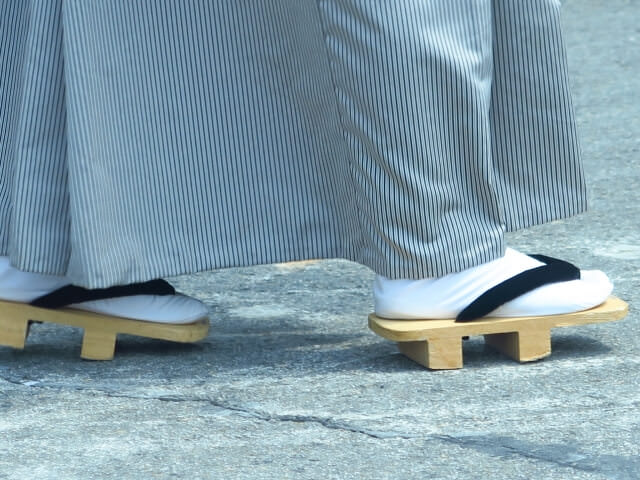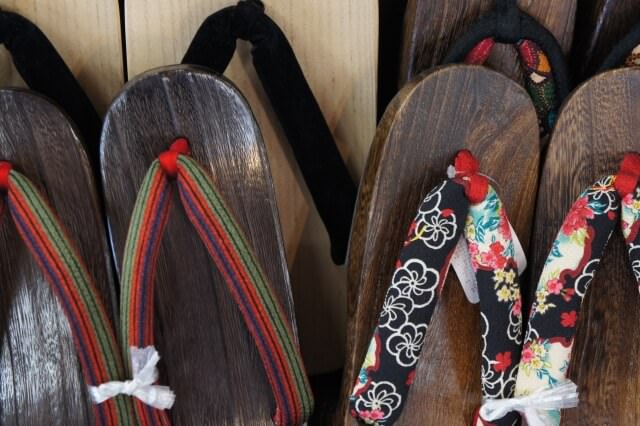-
- USA/Canada 1-800-285-2726
- Australia (02) 8006 4411

Geta, Japanese sandal, was worn with traditional cloth kimono in past century. In present Japanese society, with decrease of opportunity of wearing kimono, people don’t use this so often except for special occasions such as tea ceremony, coming-age day, graduation ceremony, and traditional festivals. Geta is usually made of wood, to hold foot, there is V-shaped thong gripped by big and second toe. As a characteristic point, there are two wooden supports under the sole. Generally, geta is worn with special socks called “tabi”, which is made to fit V-shaped thong, but in summer, when people wear geta with Yukata, thin type summer kimono, they wear geta without tabi. When you put on geta without socks, your feet do not get sweaty and the wood feels cool and comfortable.

The origin of geta is very old, it’s said that geta wasn’t used for practical item. Geta was found in ruins that was its peak before century, and from the shape and condition, it seems to be used for religious events. After agriculture especially rice culture spread into west Japan, people started using geta when they cultivate land and harvest crops. However, at this moment, people didn’t use geta as a shoes, they were still living without shoes. After this period, Chinese culture came into Japan through Korean peninsula, the custom that wearing geta was spread into common people. Usually, pine tree was used to make geta. In civil war era, samurai were wearing geta made of straw, rush and bamboo. Since Edo era, geta became more popular, and various type of geta were invented such as geta for entertainers, rainy day, and child. Depend on each geta, its shape, height of heels and numbers of supporter are different. And also, materials and design are different from region to region.
In present day, it’s a little difficult to see geta during, but you might see those during summer festivals. At summer festivals, many people go out wearing beautiful summer kimono, yukata, with geta. When you see that, you would hear the unique wooden sound of geta, which is very tasteful and somehow fragile sound. Or, if you have a chance to go to Kyoto, you might see some Geisha, women entertainers, on the street. They usually wear traditional beautiful kimono and special geta. We cannot see geta as often as past century, but there is Japanese beauty inside that.
Kimono Show and Demonstrations.
Have a beautiful Japanese Kimono on you and stroll the old town.
Patchwork Shop by Yoko Saito
Japan and Kyoto's Finest Craft Collections including Kimono & Yukata